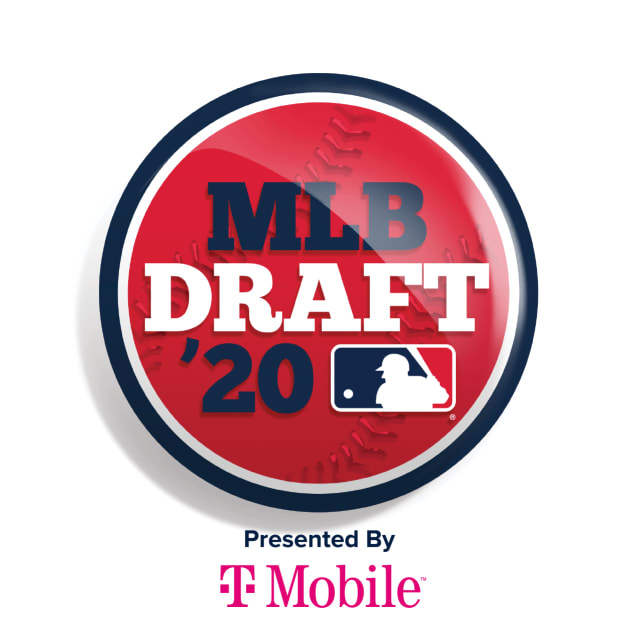Everything to know about Dodgers' 2020 Draft
This browser does not support the video element.
LOS ANGELES -- The Dodgers kept true to their pitching reputation by adding four college right-handers in this week’s Draft. They were: first-rounder Bobby Miller from Louisville, second-rounder Landon Knack from East Tennessee State, Competitive Balance Round B pick Clayton Beeter from Texas Tech and fifth-rounder Gavin Stone from Central Arkansas.
Their other two picks were speedy high school outfielder Jake Vogel in the third round and switch-hitting catcher Carson Taylor from Virginia Tech in the fourth round.
• Dodgers Draft Tracker: Every 2020 pick
Now what?
The signing deadline this year is Aug. 1.
If a club exceeds its assigned pool, it faces a penalty. Teams that outspend their allotment by 0-5 percent pay a 75 percent tax on the overage. At higher thresholds, clubs lose future picks: a first-rounder and a 75 percent tax for surpassing their pool by more than 5 and up to 10 percent; a first- and a second-rounder and a 100 percent tax for more than 10 and up to 15 percent; and two first-rounders and a 100 percent tax for more than 15 percent.
In eight years with these rules, teams have exceeded their allotments a total of 149 times but never by more than 5 percent. Twenty-one of the 30 teams outspent their pools last year.
This year, the Dodgers have a pool of $5,928,400 to spend, including $2,424,600 to spend on their first selection. As a rule, the Dodgers don’t exceed their bonus pool.
The Dodgers are confident they will sign all six of their picks, but the top three rounds are protected, meaning an unsigned player from those rounds will net the club a compensatory pick in what is expected to be an extra deep Draft next year.
Trend wrap
Neither an unconventional set of rules, an abbreviated amateur schedule nor a late drafting position could dampen the spirits of Dodgers vice president of scouting Billy Gasparino as he came out of this year’s Draft with four college right-handed pitchers from six picks.
“It was the strength of the Draft and we took advantage of it,” said Gasparino.
First-round fact
Despite growing up a Cubs fan in suburban Chicago and attending Louisville, Miller said when he came to California for the Area Code Games as a high schooler, he and his dad took in a game at Dodger Stadium.
“I was sitting in the first row in right field and thinking, ‘I would love to play here one day. This is my dream,’” he said. “You can’t get any better than this. If I had one choice, this would be the one. It’s such a coincidence. I’m so happy.”
This browser does not support the video element.
Day 2 name to watch
Beeter came into the season as a reliever three years removed from Tommy John surgery. But in a brief showing as a starter, he came out this spring firing 93-98 mph fastballs, low-80s curveballs that some scouts considered the best in the 2020 class and mid-80s sliders that can be just as nasty.
“His tempo improved, his execution improved, his ability to refocus and adjust quickly after making a bad pitch -- all really improved,” said Gasparino. “He became much more of a starter option than we ever thought it would be.”
This browser does not support the video element.
NDFA strategy
Undrafted free agents can be signed beginning on Sunday for a maximum of $20,000. The Dodgers will focus on college juniors, but Gasparino said the unprecedented process will look more like a college recruiting scramble as organizations try to sell their player development programs to players that can choose from all 30 clubs, or return to school, because the signing bonuses are relatively insignificant.
“I’ll take our chances against any other team and we’re going to pull out all stops -- have Magic Johnson call -- whatever you can think of that’s legal in the recruiting world,” said Gasparino. “But I don’t have a good grasp on the reality of what $20,000 -- how enticing that is. It won’t be for everyone. It might not be for many. We’re not going to just randomly sign guys. There’s not a real need.”
The last word
“When it’s all said and done, we bought into these upticks and up-trends from a four-week season. We thought it was going to last throughout the season. In some ways, that gave us a little bit of an advantage, because in some ways other teams didn’t. We did and we got what we thought was really good talent.” -- Gasparino
